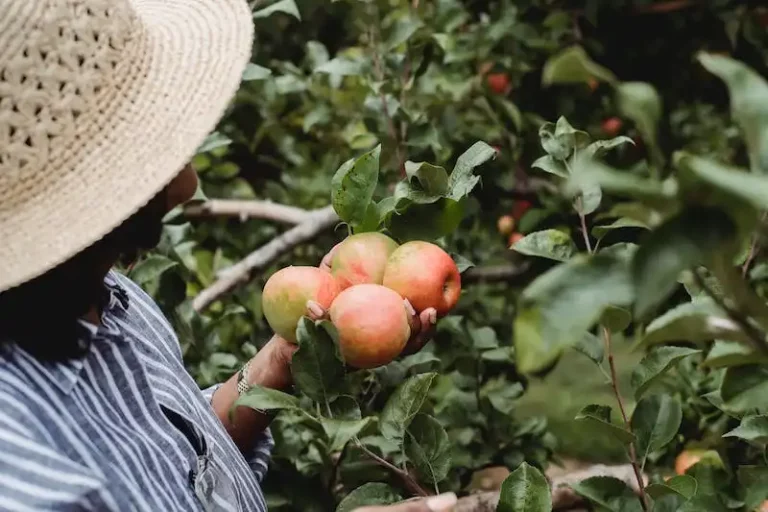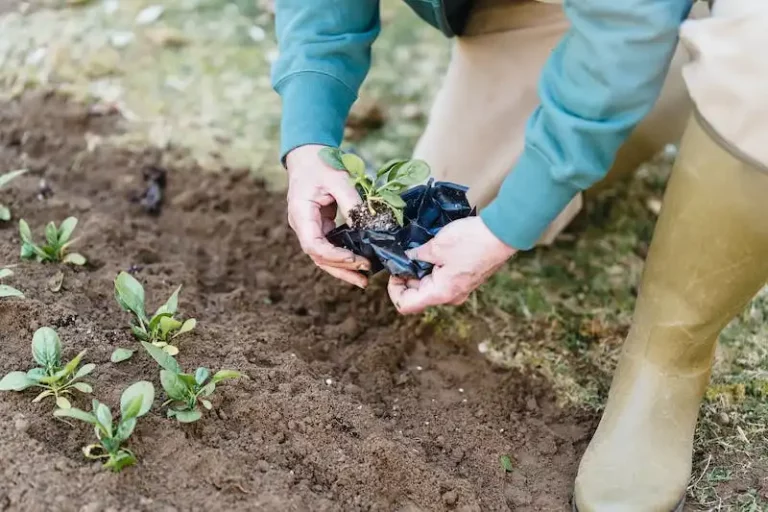Pruning zucchini plants is an important part of their care and maintenance. But what exactly is the purpose of pruning and why is it necessary? Pruning zucchini plants involves the selective removal of certain parts of the plant in order to improve its overall health and productivity. By pruning, you can stimulate the growth of new and healthier branches and encourage better airflow, which can help prevent diseases such as powdery mildew.
So, when do you need to start pruning your zucchini plants and what are the signs that indicate the need for pruning? Typically, you should begin pruning your zucchini plants when they have reached a height of about 12-18 inches (30-45 cm). One of the first signs that indicate the need for pruning is when the plant starts to produce flowers. Pruning at this stage can help redirect the plant’s energy towards fruit production and stimulate the growth of larger and healthier zucchinis.
Now, let’s talk about how to actually prune your zucchini plants. The easiest way to prune zucchini plants is to simply trim off any dead or diseased leaves or stems. This will not only improve the appearance of your plants, but it will also help prevent the spread of diseases and ensure that your plants are as healthy as possible. You can use pruning shears or sharp scissors to remove the unwanted parts of the plant.
Another reason to prune your zucchini plants is to prevent encroachment onto other plants in your garden. Zucchini plants have a tendency to spread out and take over the surrounding space. By pruning, you can control the growth of the plant and avoid overcrowding. It is important to note that pruning is legal and encouraged in many areas, so there is no reason to worry about damaging your plants or breaking any laws.
Before you start pruning, make sure you have the necessary tools. Pruning shears or sharp scissors should be sufficient to trim the leaves and stems of your zucchini plants. Additionally, you may want to have a guide or some information on hand to help you understand where and how to make the cuts. This will ensure that you are pruning correctly and not causing any harm to your plants.
Now that you know the benefits and techniques of pruning zucchini plants, you can confidently begin the pruning process. Remember to start pruning when your plants have reached about 12-18 inches in height and are showing signs of flower production. Remove any dead or diseased leaves and stems, and redirect the plant’s energy towards fruit production. By following these tips, you can ensure that your zucchini plants stay healthy and productive throughout the growing season.
Zucchini Plant Leaves Pruning 255963
Pruning zucchini plant leaves is a common practice among gardeners to ensure the healthy growth of their zucchinis. It is an essential step that should be done every growing season to prevent the above-mentioned pests and diseases from encroaching and damaging the crops. Pruning is done with a sharp knife and can be easily learned by following this guide.
Pruning zucchini plant leaves serves several purposes. First, it helps improve the airflow and circulation around the plant, which is important for preventing the growth of fungi and other diseases. Second, by removing the unnecessary leaves and stems, it stimulates the growth of new shoots and improves the overall health of the plant.
When pruning zucchini plant leaves, it is important to inspect the plant and disinfect the knife between cuts to prevent the spread of diseases. Start by removing any damaged or diseased leaves, as well as any leaves that are blocking the airflow. Then, remove any leaves that are touching the ground, as they can increase the risk of pests and diseases.
For larger zucchini plants, it may be necessary to stake the plant to ensure proper support and to prevent the leaves from touching the ground. This can be done by placing posts at either end of the row and tying the plant to the stake at a height that allows for good airflow and circulation.
Another reason to prune zucchini plant leaves is to improve the quality of the zucchinis themselves. By removing the largest leaves and any excess foliage, growers can ensure that more energy is directed towards fruit production. This can result in bigger and healthier zucchinis.
Pruning zucchini plant leaves is a task that can be easily done by any gardener, whether they are a beginner or an expert. By following the steps outlined in this guide, you can ensure the proper growth and health of your zucchini plants, and enjoy a bountiful harvest of delicious zucchinis.
Expert Response
If you’re new to zucchini growing, pruning can seem like a daunting task. However, with some expert guidance, it can become a perfect practice to ensure healthy plants and a bountiful harvest.
Pruning zucchinis is essential for optimizing sunlight exposure, improving air circulation, and preventing pest encroachment. By removing the lowest leaves and largest stalks, you can create space for the plant to grow and allow more sunlight to reach the entire plant.
One technique that growers often use is called “blossom pruning.” This practice involves removing the first few flowers that emerge on the plant, redirecting its energy towards foliage development. This is especially important for younger plants, as it allows for stronger root and stem growth.
To prune your zucchinis, start by carefully inspecting each plant for signs of powdery mildew, pests, or other issues. Use a sharp, clean knife or pruning shears to remove any diseased or damaged material. It’s crucial to disinfect your tools between cuts to prevent the spread of diseases.
When pruning, aim to remove any small or suckering stems that may be crowding the main branch. This helps improve airflow and prevents the plants from becoming too dense. Additionally, cut back any stems that are growing towards the ground or encroaching on other plants.
One easy technique is to prune your zucchini plants to a single main stalk, which allows for easier management and maintenance. This can be done by cutting off lateral stems that emerge from the main stalk. Leave around six leaves above the tip of the plant to ensure enough foliage for photosynthesis.
As a general guideline, prune your zucchini plants every one to two weeks during the growing season. This will help stimulate new growth and ensure healthy plants. Remember, practice makes perfect, and with each pruning session, you’ll learn more about what works best for your plants.
In conclusion, expert pruning of zucchinis is a crucial part of their cultivation. By following this guide and practicing proper pruning techniques, you can optimize the growth and yield of your zucchini plants.
How To Prune Zucchini
Pruning zucchini plants is a proper and important practice for any gardener looking to improve their zucchini harvest. By pruning your zucchini plants, you can ensure that they have the space, sunlight, and nutrients they need to grow and produce healthy fruit.
But what exactly do you need to do to prune your zucchini plants? Here is a step-by-step guide to help you get started:
Step 1: Start Pruning Early
The best time to start pruning your zucchini plants is when they are just starting to grow. By pruning at this stage, you can stimulate the plants to grow more, resulting in a higher yield of zucchinis.
Step 2: Inspect the Plant
Before you begin pruning, inspect your zucchini plant for any signs of pests or disease. If you notice any issues, take the necessary steps to fix them before pruning.
Step 3: Remove the Lowest Leaves
The first step in pruning your zucchini plant is to remove the lowest leaves. These leaves often do not receive much sunlight and can hinder the growth of the plant.
Step 4: Remove Tiny Fruits
If your zucchini plant has any tiny fruits that are unlikely to fully develop, remove them. This will improve the overall quality of your zucchinis and allow the plant to focus its energy on the larger, more productive fruits.
Step 5: Prune to Improve Air Circulation
One of the main reasons for pruning zucchini plants is to prevent mildew and other common diseases. To do this, prune the plant to improve air circulation. Cut back branches that are encroaching on each other to ensure that each part of the plant has access to sunlight and airflow.
Step 6: Stake Your Zucchini Plants
If your zucchini plants are growing very large, it is a good idea to stake them. This will help support the weight of the plant and prevent it from sprawling onto the ground. Staking can also make it easier to access the zucchinis for harvesting.
In conclusion, pruning your zucchini plants is an essential step to ensure a healthy and productive harvest. By following this pruning guide and taking the proper precautions, you can maintain a high percentage of fruit production and prevent common issues such as pest infestation or mildew. Pruning your zucchinis is an easy and relatively quick task that will greatly benefit both the plants and the growers.
Do You Have to Prune Zucchini to Have an Abundant Harvest?
Pruning zucchini plants is not absolutely necessary for a abundant harvest, but it can be beneficial in certain situations. Zucchinis are known for their fast and vigorous growth, producing large and abundant harvests without much effort. However, by carefully pruning your zucchini plants, you can improve their productivity even further.
When zucchini plants are just tiny seedlings, it’s important to remove the first few blossoms to redirect the plant’s energy towards growing strong roots and foliage. Once the plant is established and starts producing flowers, that’s where pruning becomes more important. By removing some of the outermost leaves and stems, you can stimulate airflow and sunlight penetration, which helps prevent diseases such as powdery mildew.
So, why prune your zucchini plants? Pruning helps improve airflow within the plant, reducing the chances of diseases and pests. It also helps lift the leaves and flowers off the ground, preventing rot and making it easier for pollinators to access the blossoms. Pruned plants are also easier to care for, as you can easily spot and remove any pests or diseased parts.
When pruning zucchini plants, it’s important to use clean and sharp tools to avoid spreading diseases. You can use alcohol or a bleach solution to disinfect your tools between cuts. Start by removing any damaged or yellowing leaves – those are often the first signs of disease or pest infestation. Then, proceed to trim any foliage that is blocking sunlight or preventing good airflow.
Pruning zucchini plants can be done throughout the growing season, but it’s best to do it in the early morning or late evening to avoid stressing the plants during the hottest parts of the day. Remember not to remove too much foliage at once, as zucchinis rely on their leaves for photosynthesis and energy production.
Some growers choose not to prune their zucchini plants at all, and they still achieve bountiful harvests. If you decide not to prune, you can still follow some of the other tips to improve your zucchini plants’ productivity, such as providing them with a steady water supply, fertilizing them regularly, and keeping an eye out for pests and diseases.
In conclusion, pruning zucchinis is not a fixed requirement, but it can definitely help improve their productivity. By allowing for better airflow and sunlight exposure, pruning stimulates the plants and prevents common issues like rot and pests. Whether you choose to prune or not, the mission remains the same – to grow healthy and delicious zucchinis!

